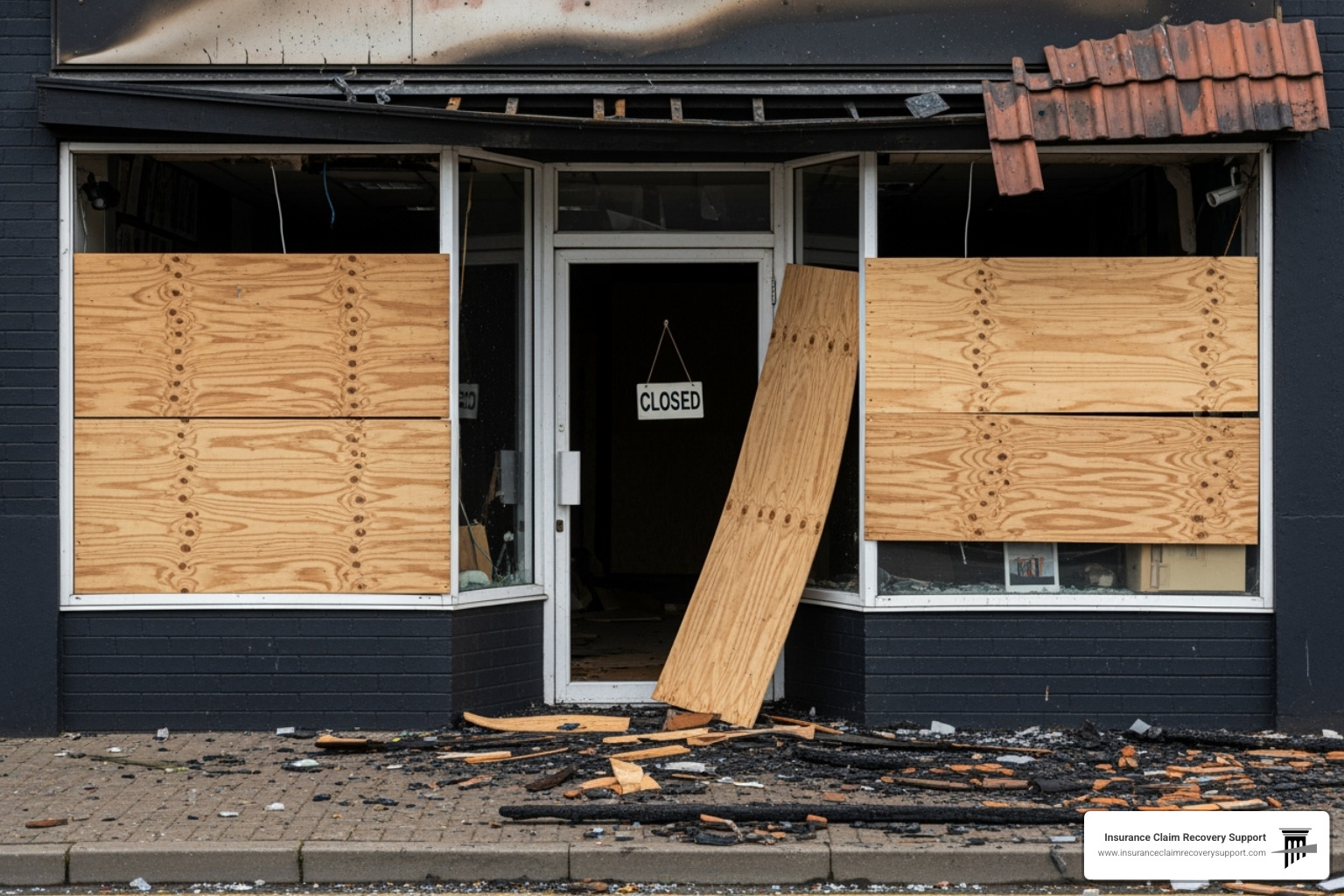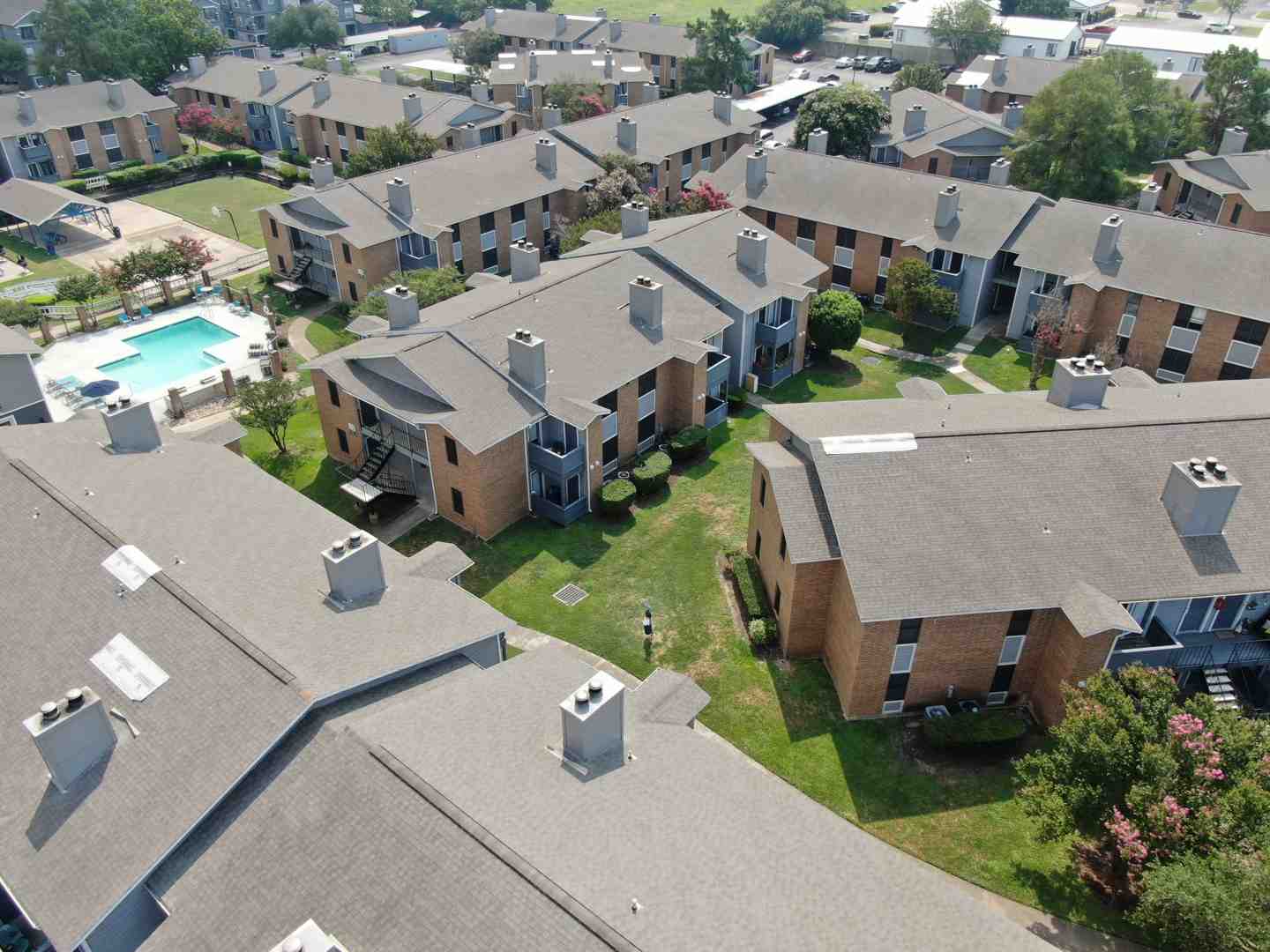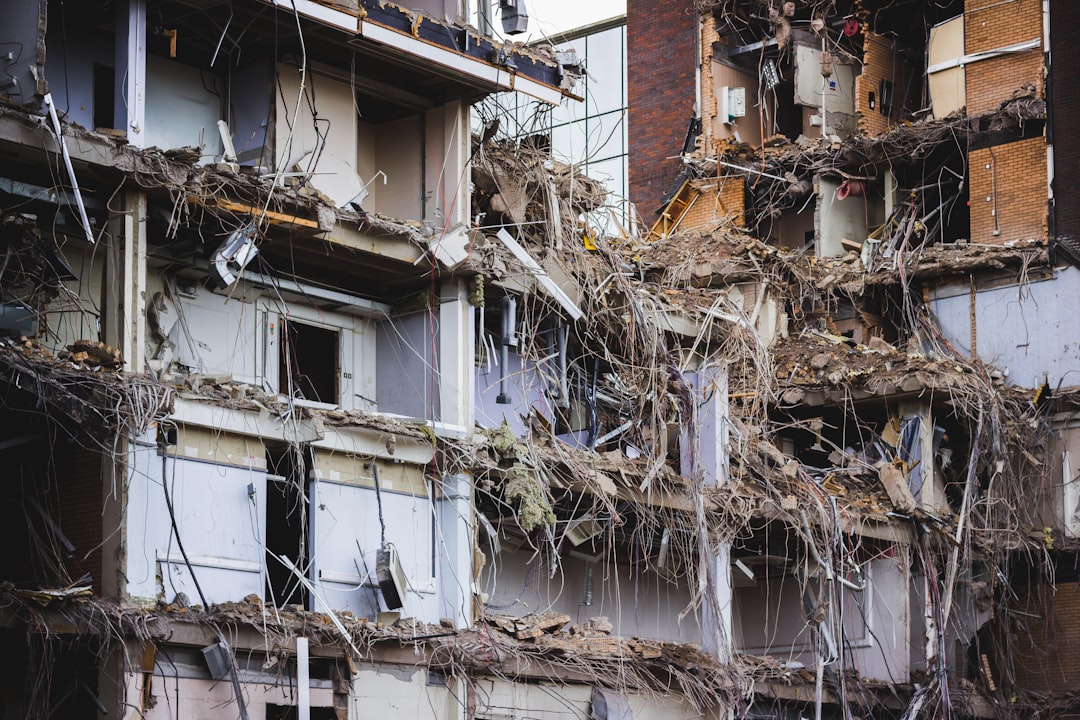Understanding the Impact of Tornadoes
How much damage can a tornado cause? Tornadoes are among nature’s most destructive events, capable of causing immense damage in a matter of minutes:
- Winds: Rotating winds can exceed 250 mph.
- Destruction: Uproot trees, demolish buildings, and transform objects into deadly missiles.
- Fatality Rate: Violent tornadoes represent 2% of all tornadoes but cause nearly 70% of tornado-related deaths.
Tornadoes form when severe thunderstorms develop in warm, moist, unstable air ahead of a cold front. These thunderstorms can produce tornadoes, large hail, and damaging winds. Tornado formation is also influenced by geographic regions, such as the southern High Plains and areas along the “dry line.”
Scott Friedson CEO of Insurance Claim Recovery Support, possesses over 15 years of expertise in settling complex tornado insurance claims.

How Much Damage Can a Tornado Cause?
Tornadoes can cause a staggering amount of damage in a very short time. The economic impact, property damage, and crop destruction they bring can be overwhelming.
Types of Tornado Damage
Roof Damage
Tornadoes can literally lift roofs off buildings. This happens because of the pressure difference between the inside and outside of the building. When the combined interior low pressure and exterior high pressure surpasses the force holding the roof down, it can be swept away.
To mitigate this, new homes in hurricane zones must have roofs strapped to walls and foundations. This technique can also help protect against tornadoes.
Window Breakage
Windows are highly vulnerable during a tornado. The pressure difference can shatter them in their frames. Flying debris can also break windows and sliding doors. This type of damage can occur miles away from the tornado itself. Impact-resistant shutters can help protect windows during a tornado.
Siding Damage
Strong winds, flying debris, and hail can wreak havoc on your home’s siding. Tornadoes can hurl large objects like cars and telephone poles through the walls of your home. To mitigate milder damage, remove dead trees and branches that could become projectiles, and ensure that your siding and gutters are secure.
Structural Collapse
Tornadoes can cause walls to buckle, foundations to shift, and entire sections of buildings to collapse. Inspecting structural damage requires professional assessments to ensure safety and proper repair.
Assessing the Financial Toll
Economic Impact
Tornadoes result in significant economic losses. For example, the Joplin, Missouri tornado in 2011 caused $2.8 billion in damages, making it one of the costliest tornadoes in U.S. history. These losses can be classified as direct or indirect.
Property Damage
In 2022, tornadoes caused around $700 million in property and crop damage in the U.S. Iowa and Louisiana sustained the most property damage that year. For instance, a series of tornadoes in Iowa on March 5, 2022, caused $223 million in destruction.
Crop Destruction
Tornadoes can destroy thousands of acres of crops. For example, a tornado in Nebraska in June 2022 destroyed many grain bins and thousands of acres of crops.
Insurance Claims
Filing insurance claims after a tornado can be complex. Common disputes include coverage disagreements, undervaluation of damages, and delayed claims. Documentation and hiring a public adjuster can help ensure a fair settlement.
Recovery Costs
Recovery costs include repairing or replacing damaged property, removing debris, and restoring landscapes. These costs can be significant and add up quickly, especially if the damage is extensive.
Economic Disruption
Tornadoes can disrupt local economies by causing lost production and sales, increased commute times, and decreased tourist activity. For example, the Joplin tornado affected at least a quarter of the city, leading to significant economic disruption.
Understanding the extent and types of damage caused by tornadoes is essential for property owners to navigate the insurance claims process effectively. Next, let’s explore the science behind tornado destruction.
The Science Behind Tornado Destruction
How Tornadoes Form and Gain Strength
Tornadoes are born from supercell thunderstorms, which are powerful storms with a persistent rotating updraft called a mesocyclone. These storms need three key ingredients to form: moisture, instability, and wind shear.
- Moisture: Warm, moist air from the Gulf of Mexico often fuels these storms. This moisture is a crucial ingredient for the thunderstorms to develop.
- Instability: When warm, moist air near the ground rises and meets cooler, drier air above, it creates instability. This unstable air can lead to powerful updrafts within the storm.
- Wind Shear: Wind shear refers to changes in wind speed and direction with height. This creates a horizontal spinning effect in the lower atmosphere. When this horizontal spin gets tilted vertically by an updraft, it can form a rotating mesocyclone.
Once a mesocyclone is established, it can tighten and intensify, eventually forming a tornado. The tornado’s strength and longevity depend on the balance and interaction of these factors.
The Enhanced Fujita Scale Explained
The Enhanced Fujita (EF) Scale is the standard for rating the strength of tornadoes based on the damage they cause. This scale ranges from EF0 to EF5, with EF5 being the most destructive.
Damage Indicators and Wind Speed Estimation
The EF Scale uses 28 damage indicators such as different types of buildings, structures, and trees. For each damage indicator, there are 8 degrees of damage, ranging from minor damage to complete destruction. These indicators help meteorologists estimate the tornado’s wind speeds.
Here’s a quick breakdown:
- EF0: Wind speeds of 65-85 mph. Causes minor damage, such as broken tree branches and roof shingles.
- EF1: Wind speeds of 86-110 mph. Can rip off roofs and overturn mobile homes.
- EF2: Wind speeds of 111-135 mph. Causes significant damage to houses and can uproot large trees.
- EF3: Wind speeds of 136-165 mph. Severe damage, including tearing off most walls from well-constructed homes.
- EF4: Wind speeds of 166-200 mph. Devastating damage, with houses leveled and cars thrown.
- EF5: Wind speeds over 200 mph. Incredible damage, with strong frame houses lifted off foundations and swept away.
Wind Speeds and Pressure Differences
Tornadoes can have wind speeds exceeding 300 mph, especially in the most violent ones. These winds can lift roofs, uproot trees, and turn debris into dangerous projectiles. The pressure differences inside a tornado also contribute to the damage. The low pressure inside the tornado can cause buildings to explode outward if they are not constructed to withstand such forces.
Debris Projectiles
Flying debris is one of the most dangerous aspects of a tornado. Objects like glass, metal, and wood can become lethal projectiles, causing significant damage and posing a severe threat to life. For example, a tornado in El Reno, Oklahoma, in 2019 caused extensive damage to a mobile home park and nearby motel, showing just how destructive these debris projectiles can be.
Understanding the science behind tornado formation and the Enhanced Fujita Scale helps us grasp the immense power of these natural phenomena. Next, let’s look at how to prepare and protect your home from such destructive forces.
Tornado Preparedness and Safety Measures
Preparing for a tornado can make a huge difference in how much damage your home sustains and how safely you and your loved ones weather the storm. Here are some effective home reinforcement techniques and community and personal safety plans to help you stay protected.
Effective Home Reinforcement Techniques
Building Codes: Modern building codes often include specific requirements for tornado-prone areas. These codes ensure homes are built to withstand higher wind speeds, reducing the risk of catastrophic damage. Check with your local authorities to ensure your home meets these standards.
Roof Strapping: Roofs can be ripped off homes due to pressure differences during a tornado. Strapping your roof securely to the walls and foundation can prevent it from lifting off. This technique, common in hurricane zones, is also effective against tornadoes.
Impact-Resistant Shutters: Windows and sliding doors are vulnerable to shattering from both pressure differences and flying debris. Installing impact-resistant shutters can prevent this, keeping your home more secure and reducing internal damage.
Garage Door Reinforcement: Garage doors are often the first to fail in high winds. Reinforcing your garage door with vertical braces or installing a stronger door can prevent it from being blown off its track.
Community and Personal Safety Plans
Emergency Kits: Always have an emergency kit ready. It should include:
- Water and non-perishable food for at least 72 hours.
- First-aid supplies, medications, and personal hygiene items.
- Flashlights, batteries, and a weather radio.
- Important documents in a waterproof container.
Safe Rooms: Identify a safe room in your home, preferably in the basement or an interior room on the lowest floor, away from windows. This room should be easily accessible during a tornado warning.
Community Alerts: Stay informed by signing up for your community’s warning system. The Emergency Alert System (EAS) and NOAA Weather Radio provide real-time updates and alerts.
Evacuation Plans: Develop an evacuation plan and practice it with your family. Know the difference between a tornado watch and a warning, and act accordingly. A watch means conditions are favorable for a tornado, while a warning means one has been sighted or indicated by radar.
By implementing these tornado preparedness and safety measures, you can significantly reduce the risks associated with tornadoes. Next, let’s debunk some common myths and misconceptions about tornadoes.
Tornado Myths and Misconceptions
Common Misunderstandings
Exploding Buildings Myth
A popular myth is that buildings explode due to the low pressure in a tornado. However, this is not true. Tornadoes cause damage through their high winds, which can rip apart structures. If a building appears to have “exploded,” it’s because the wind caused it to collapse, not because of pressure differences.
Tornado Alleys
“Tornado Alley” is often mentioned as the primary area where tornadoes occur. While it’s true that the central U.S. sees many tornadoes, they can happen anywhere. Tornadoes have been recorded in all 50 states. The idea of a specific “alley” can give a false sense of security to those living outside it.
Time of Day Occurrences
Many people think tornadoes only happen in the late afternoon or evening. While it’s true that many tornadoes occur during these times, they can happen at any time of day or night. For example, the 1974 Super Outbreak had tornadoes that struck both day and night, causing widespread damage and fatalities.
Eye of the Tornado
Unlike hurricanes, tornadoes do not have a calm “eye.” The entire tornado is a violent, rotating column of air. Any momentary calmness you might experience is likely just a brief lull in the storm, not an indication that the tornado has passed.
Tornado Targeting
Some believe tornadoes target mobile homes or specific areas. Tornadoes do not discriminate; they follow the path set by the storm system. Mobile homes are often more vulnerable simply because they are less sturdy than permanent structures.
Weather Conditions Myths
A common misconception is that tornadoes cannot form in certain weather conditions, such as during winter or in mountainous regions. Tornadoes can and do form in a variety of conditions. For instance, the Salt Lake City tornado of 1999 occurred in a mountainous area, defying the common belief that such geography is immune to tornadoes.
By debunking these common misunderstandings, we can better prepare for and respond to tornado threats. Next, let’s explore the science behind tornado destruction.
Conclusion
How to Navigate Insurance Claims After a Tornado
Dealing with the aftermath of a tornado can be overwhelming. From assessing the damage to filing insurance claims, the process is complex and often stressful. Here’s how we can help.
Recovery Support
First and foremost, your safety and that of your family is paramount. Once you’re safe, it’s time to start the recovery process. The damage caused by a tornado can be extensive, impacting roofs, windows, structural integrity, and personal property. Our goal is to help you navigate this challenging time and ensure you receive fair compensation for your losses.
Insurance Claim Recovery Support LLC
At Insurance Claim Recovery Support, we specialize in advocating for policyholders. We understand the intricacies of insurance policies and are adept at documenting and arguing for the fullest possible compensation. For example, consider a homeowner in Dallas who faced $50,000 worth of tornado damage. By meticulously documenting every aspect of the damage and negotiating with the insurer, we helped them secure a settlement that fully covered their repair costs, minus the deductible.
Community Resilience
Tornadoes can leave communities feeling vulnerable. However, with the right support and resources, recovery is possible. We stand with property owners in their journey to recovery, providing exceptional service and uncompromising support. Our deep understanding of Texas’ unique weather patterns makes us the perfect ally in storm damage claims.
Claim Process
Navigating the insurance claims process can be daunting. Here are some essential steps to follow:
- Inspect your home for any signs of structural issues. Don’t enter damaged buildings until they’re deemed safe by local authorities.
- Take pictures of your home’s damage, both inside and outside.
- Use your home inventory to determine what items need to be repaired or replaced.
- Contact your insurance company to report the damage and start the claim process.
- Keep receipts for all expenses such as hotel bills and restaurant meals if you can’t live in your house.
- Consider hiring a public adjuster to help you maximize the claim settlement and ensure you get what you’re entitled to.
Maximizing Settlements
Our primary goal is to maximize your settlement. Tornado damage can be extensive, and we know how to document and argue for the fullest possible compensation. We work for you, not the insurance company, ensuring that your claim is not undervalued or unfairly denied.
Policyholder Advocacy
We pride ourselves on advocating for policyholders. Tornadoes can leave you feeling vulnerable, but you don’t have to navigate the insurance maze alone. Our experienced public adjusters work for you, ensuring that your claim is not undervalued or unfairly denied.
For more information on how we can assist you with your insurance claim, visit our Tornado Damage Claim Service Page. Let us help you navigate the path to recovery.
By following these steps and utilizing professional help, you can navigate the insurance claims process more effectively and ensure a fair settlement.






